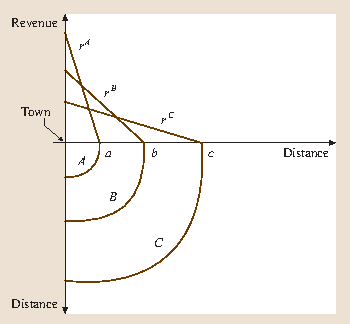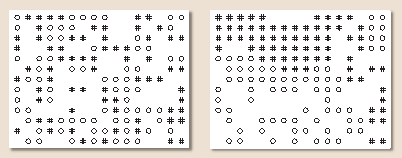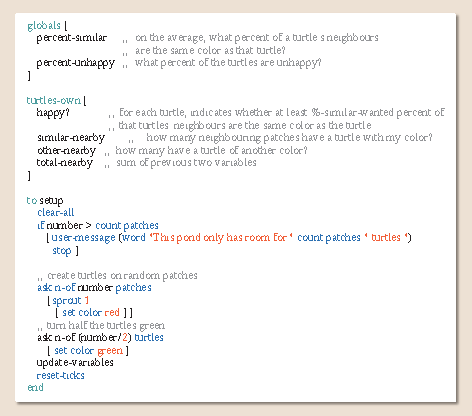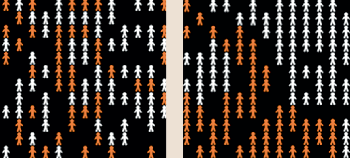Abstract
The chapter addresses the philosophical issues raised by the use of hypothetical modeling in the social sciences. Hypothetical modeling involves the construction and analysis of simple hypothetical systems to represent complex social phenomena for the purpose of understanding those social phenomena.
To highlight its main features hypothetical modeling is compared both to laboratory experimentation and to computer simulation. In analogy with laboratory experiments, hypothetical models can be conceived of as scientific representations that attempt to isolate, theoretically, the working of causal mechanisms or capacities from disturbing factors. However, unlike experiments, hypothetical models need to deal with the epistemic uncertainty due to the inevitable presence of unrealistic assumptions introduced for purposes of analytical tractability. Computer simulations have been claimed to be able to overcome some of the strictures of analytical tractability. Still they differ from hypothetical models in how they derive conclusions and in the kind of understanding they provide.
The inevitable presence of unrealistic assumptions makes the legitimacy of the use of hypothetical modeling to learn about the world a particularly pressing problem in the social sciences. A review of the contemporary philosophical debate shows that there is still little agreement on what social scientific models are and what they are for. This suggests that there might not be a single answer to the question of what is the epistemic value of hypothetical models in the social sciences.
Access this chapter
Tax calculation will be finalised at checkout
Purchases are for personal use only
Similar content being viewed by others
Abbreviations
- ABM:
-
agent-based model
References
A.C. Crombie: Styles of Scientific Thinking in the European Tradition (Gerald Duckworth, London 1995)
I. Hacking: The disunities of the sciences. In: The Disunity of Science: Boundaries, Context and Power, ed. by P. Galison, D. Stump (Stanford Univ. Press, Palo Alto 1996) pp. 37–74
M.S. Morgan: The World in the Model: How Economists Work and Think (Cambridge Univ. Press, Cambridge 2012)
U. Mäki: Symposium on explanations and social ontology 2: Explanatory ecumenism and economics imperialism, Economics Phil. 18, 237–259 (2002)
K.A. Clarke, D.M. Primo: A Model Discipline. Political Science and the Logic of Representation (Oxford Univ. Press, Oxford 2012)
C.R. Edling: Mathematics in sociology, Annu. Rev. Sociol. 28, 197–220 (2002)
C. Marchionni: Playing with networks: How economists explain, Eur. J. Philos. Sci. 3(3), 331–352 (2013)
J. Kuorikoski, C. Marchionni: Unification and mechanistic detail as drivers of model construction: Models of networks in economics and sociology, Stud. Hist. Philos. Sci. 48, 97–104 (2014)
P. Godfrey-Smith: The strategy of model-based science, Biol. Philos. 21, 725–740 (2006)
M. Boumans: How Economists Model the World into Numbers (Routledge, London 2005)
R. Backhouse: Representation in economics. In: Measurement in Economics: A Hand Book, ed. by M. Boumans (Elsevier, Amsterdam 2007) pp. 135–152
J. Kuorikoski, C. Marchionni: Broadening the perspective: Epistemic, social, and historical aspects of scientific modeling, Perspect. Sci. (2015), doi:10.1162/POSC_e_00179
U. Webster, J. Sell (Eds.): Laboratory Experiments in the Social Sciences (Elsevier, Amsterdam 2007)
F. Guala: The Methodology of Experimental Economics (Cambridge Univ. Press, Cambridge 2005)
R.B. Morton, K.C. Williams: Experiment in Political Science and the Study of Causality: From Nature to the Lab (Cambridge Univ. Press, Cambridge 2010)
U. Mäki: On the method of isolation in economics. In: Idealization IV: Intelligibility in Science, ed. by C. Dilworth (Rodopi, Amsterdam 1992) pp. 317–351
N. Cartwright: Nature’s Capacities and Their Measurement (Clarendon, New York 1989)
U. Mäki: Models are experiments, experiments are models, J. Econ. Methodol. 12, 303–315 (2005)
M.S. Morgan: Experiments versus models: New phenomena, inference and surprise, J. Econ. Methodol. 12, 317–329 (2005)
F. Guala: Models, simulations, and experiments. In: Model-Based Reasoning: Science, Technology, Values, ed. by L. Magnani, N. Nersessian (Kluwer Academic/Plenum, New York 2002) pp. 59–74
N. Cartwright: The vanity of rigour in economics: Theoretical models and Galileian experiments. In: The Experiment in the History of Economics, ed. by P. Fontaine, R. Leonard (Routledge, London 1999) pp. 135–153
M.S. Morgan: Model experiments and models in experiments. In: Model-Based Reasoning: Science, Technology, Values, ed. by L. Magnani, N. Nersessian (Kluwer Academic/Plenum, New York 2002) pp. 41–58
U. Mäki: Models and the locus of their truth, Synthese 180(1), 47–63 (2011)
M.S. Morgan: Models, stories and the economic world, J. Econ. Methodol. 8(3), 361–384 (2001)
U. Mäki: MISSing the world. Models as isolations and credible surrogate systems, Erkenntnis 70(1), 29–43 (2009)
B.C. Van Fraassen: Scientific Representation: Paradoxes of Perspective (Oxford Univ. Press, Oxford 2008)
W.S. Parker: Does matter really matter? Computer simulations, experiments, and materiality, Synthese 169, 483–496 (2009)
N. Cartwright: Hunting Causes and Using Them (Cambridge Univ. Press, Cambridge 2007)
J. Kuorikoski, A. Lehtinen, C. Marchionni: Economic modelling as robustness analysis, Br. J. Philos. Sci. 61(3), 541–567 (2010)
J. Kuorikoski, A. Lehtinen, C. Marchionni: Robustness analysis disclaimer: Please read the manual before use!, Biol. Philos. 27(6), 891–902 (2012)
J. Odenbaugh, A. Alexandrova: Buyer beware: Robustness analyses in economics and biology, Biol. Philos. 26(5), 757–771 (2011)
C. Deissenberg, S. Hoog, H. Dawid: EURACE: A massively parallel agent-based model of the European economy, Appl. Math. Comput. 204, 541–552 (2008)
V. Spaiser, P. Hedstrom, S. Ranganathan, K. Jansson, M. Nordvik, and D. Sumpter: Identifying Complex Dynamics in Social Systems: A New Methodological Approach Applied to Study School Segregation, Sociological Methods and Research, Art.No. 0049124116626174 (2016)
E. Winsberg: Computer simulations in science. In: The Stanford Encyclopedia of Philosophy, ed. by E. Zalta http://plato.stanford.edu/archives/sum2013/entries/simulationscience/ (Summer 2013 Edition)
R. Axelrod: More effective choice in the prisoner’s dilemma, J. Confl. Resolut. 24(3), 379–403 (1980)
R. Axelrod, W.D. Hamilton: The evolution of cooperation, Science 211(4489), 1390–1396 (1981)
J.M. Epstein: Generative Social Science: Studies in Agent-Based Computational Modeling (Princeton Univ. Press, New Jersey 2006)
P. Hedström: Dissecting the Social: On the Principles of Analytical Sociology (Cambridge Univ. Press, Cambridge 2005)
C. Marchionni, P.K. Ylikoski: Generative explanation and individualism in agent-based simulation, Philos. Soc. Sci. 43(3), 323–340 (2013)
S. Hartmann: The world as a process: Simulations in the natural and social sciences. In: Modelling and Simulation in the Social Sciences from the Philosophy of Science Point of View, ed. by R. Hegselmann, U. Mueller, K. Troitzsch (Kluwer, Dordrecht 1996) pp. 77–100
P. Humphreys: Computer simulation. In: PSA 1990, Vol. 2, ed. by A. Fine, M. Forbes, L. Wessels (The Philosophy of Science Association, East Lansing 1990) pp. 497–506
A. Lehtinen, J. Kuorikoski: Computing the perfect model – Why do economists shun simulation?, Philos. Sci. 74, 304–329 (2007)
N. Gilbert, K.G. Troitzsch: Simulation for the Social Scientist (Open Univ. Press, Buckingham 1999)
M. Weisberg: Simulation and Similarity: Using Models to Understand the World (Oxford Univ. Press, Oxford 2013)
M. Morrison: Models, measurement and computer simulation: The changing face of experimentation, Philos. Stud. 143(1), 33–57 (2009)
M.T. Hannan, J. Freeman: The population ecology of organizations, Am. J. Sociol. 82(5), 929–964 (1977)
R. Feynman: Simulating physics with computers, Int. J. Theor. Phys. 21, 467–488 (1982)
R. Muldoon: Robust simulations, Philos. Sci. 74(5), 873–883 (2007)
E. Bruch, R. Mare: Neighborhood choice and neighborhood change, Am. J. Sociol. 112, 667–709 (2006)
J. Zhang: A dynamic model of residential segregation, J. Math. Sociol. 28, 147–170 (2004)
R. Frigg, J. Reiss: The philosophy of simulation: Hot new issues or same old stew, Synthese 169, 593–613 (2009)
M. Friedman: The methodology of positive economics. In: Essays in Positive Economics, ed. by M. Friedman (Chicago Univ. Press, Chicago 1953) pp. 3–43
U. Mäki: Isolation, idealization and truth in economics, Poznan Stud. Philos. Sci. Humanit. 38, 147–168 (1994)
U. Mäki: Realistic realism about unrealistic models. In: The Oxford Hand Book of Philosophy of Economics, ed. by D. Ross, H. Kincaid (Oxford Univ. Press, Oxford 2009) pp. 68–98
N. Cartwright: Capacities. In: The Hand Book of Economic Methodology, ed. by J. Davis, W. Hands, U. Mäki (Elgar, Northampton 1999) pp. 45–48
N. Cartwright: If no capacities then no credible worlds. But can models reveal capacities?, Erkenntnis 70, 45–58 (2009)
R.N. Giere: Explaining Science: A Cognitive Approach (Univ. Chicago Press, Chicago 1988)
T. Grüne-Yanoff: Learning from minimal economic models, Erkenntnis 70, 81–99 (2009)
T. Grüne-Yanoff: Appraising models non-representationally, Philos. Sci. 80(5), 850–861 (2013)
N.E. Aydinonat, P. Ylikoski: Understanding with theoretical models, J. Econ. Methodol. 21(1), 19–36 (2014)
L. Casini: Not-so-minimal models: Between isolation and imagination, Philos. Soc. Sci. 44(5), 646–672 (2014)
N.E. Aydinonat: Models, conjectures and explanation: An analysis of Schelling’s checkerboard model of residential segregation, J. Econ. Methodol. 14, 429–454 (2007)
R.I.G. Hughes: Models and representation, Proc. Philos. Sci., Vol. 64 (1997) pp. S325–S336
R. Northcott, A. Alexandrova: It’s just a feeling: Why economic models do not explain, J. Econ. Methodol. 20(3), 262–267 (2013)
J. Reiss: The explanation paradox, J. Econ. Methodol. 19(1), 43–62 (2012)
J. Kuorikoski, A. Lehtinen: Incredible worlds, credible results, Erkenntnis 70, 119–131 (2009)
X. de Donato Rodríguez, J.Z. Bonilla: Credibility, idealisation, and model building: An inferential approach, Erkenntnis 70(1), 101–118 (2009)
J. Kuorikoski, P. Ylikoski: External representations and scientific understanding, Synthese 192(12), 3817–3837 (2015)
F. Guala: Building economic machines: The FCC auctions, Stud. Hist. Philos. Sci. 32, 453–477 (2001)
A. Alexandrova: Connecting economic models to the real world: Game theory and the FCC spectrum auctions, Philos. Soc. Sci. 36(2), 173–192 (2006)
A. Alexandrova: Making models count, Philos. Sci. 75(3), 383–404 (2008)
P. Humphreys: Extending Ourselves: Computational Science, Empiricism, and Scientific Method (Oxford Univ. Press, New York 2004)
J.H. von Thünen: Der isolierte Staat in Beziehung auf Landwirtschaft und Nationalökonomie (Phuthes, Hamburg 1826)
U. Mäki: Realism and the nature of theory: A lesson from J H von Thünen for economists and geographers, Environ. Plan. A 36(10), 1719–1736 (2004)
R. Capello: Economia Regionale (Il Mulino, Bologna 2004)
T. Schelling: Dynamic models of segregation, J. Math. Sociol. 1, 143–186 (1971)
U. Wilensky: NetLogo Segregation model (Center for Connected Learning and Computer-Based Modeling, Northwestern University, Evanston 1997),http://ccl.northwestern.edu/netlogo/models/Segregation
Acknowledgements
Alessandra Basso was mainly responsible for writing Sects. 19.2 and 19.2, Chiara Lisciandra, Sects. 19.3 and 19.2, Caterina Marchionni, Sect. 19.1 and Sect. 19.4. Section 19.4draws extensively on A. Basso, C. Marchionni: I Modelli in Economia, APhEx (2015). We thank our colleagues at TINT for helpful comments on an earlier draft of the chapter. In particular, we thank Aki Lehtinen, Miles MacLeod, Jaakko Kuorikoski and Till Grüne-Yanoff. Special thanks goes to Juho Pääkkönen for his invaluable assistance. All remaining mistakes are obviously ours.
Author information
Authors and Affiliations
Corresponding author
Editor information
Editors and Affiliations
Appendices
Appendix: J.H. von Thünen’s Model of Agricultural Land Use in the Isolated State
Von Thünen’s model of agricultural land use describes how the distance from a market affects the distribution of agricultural productions around a city [19.73]. This model is considered to be one of the first examples of modern economic modeling, and it is still a classic model in geography and urban economics from which an entire tradition of models of land use in urban spaces has originated. Von Thünen’s model has also received some attention in the philosophy of economics, and thanks to its analytical simplicity, it is particularly suitable for illustrating some of the ideas discussed in this chapter [19.23, 19.3, 19.74].
Von Thünen’s localization model is based on a set of assumptions that describes a homogeneous and isolated agricultural space in which a single town is located:
-
1.
The area is a plain, i. e., there are no mountains or valleys
-
2.
There are no streets or navigable rivers
-
3.
The plain is completely cut off from the outside world
-
4.
Climate and fertility are uniform across space
-
5.
The town is located centrally and has no spatial dimension
-
6.
All markets and industrial activities take place in the town
-
7.
Production costs are constant across space
-
8.
Transportation costs are directly proportional to the distance, the weight and the perishability of the goods
-
9.
Selling prices are fixed and the demand is unlimited
-
10.
Farmers have complete information and they act to maximize their revenue.
Under these assumptions, a pattern of concentric rings around the town emerges. Dairying and intensive farming (vegetables and fruit) occupy the ring closest to the town, because these products are perishable and incur the highest transportation costs. Timber and firewood are located in the second ring, because wood is heavy and hence difficult and costly to transport. The third ring consists of extensive farming of crops, such as grain for bread, that are more durable than fruit and less heavy than wood. On the outermost ring stock farming and cattle ranching take place, because animals can walk to the city to be sold at the market and thus have low transportation costs.
This result can also be described in analytical terms by determining which production is most profitable at different distances from the town.
The revenue r of each agricultural production consists in its selling price p minus its production and transportation costs. Since the selling price and the unitary production and transportation costs are fixed, the revenue depends only on the distance from the city
where x is the quantity of the good, c the production cost per unit, t the transportation cost per unit and d the distance from the market. The apex i indicates the kind of agricultural production: Dairying and intensive farming A, timber and firewood B, and extensive farming C.
The slope of each revenue curve depends on transportation cost and distance −td.
The descending curves in Fig. 19.B4 represent the revenue of each production depending on its distance from the town; e. g., at distance a it becomes more profitable to produce product B.
The production revenue and the land use in von Thünen’s model (after [19.75, p. 76])
Appendix: T. Schelling’s Agent-Based Model of Segregation in Metropolitan Areas
Thomas Schelling’s work on racial segregation paved the way for the use of simulations in the study of social phenomena. In his seminal work, Schelling studied how macro-phenomena, such as segregation, can emerge as an unintended effect of the combination of many interrelated decisions [19.76]. Racial sorting is a case in point. Segregation has been proven to occur as a side effect of the preference of individuals for having a few neighbors of the same ethnic group, rather than as the consequence of a preference for segregation itself.
Schelling represented the segregation process by means of a checkerboard and dimes and pennies, standing respectively for a certain metropolitan area and for the individuals of two different groups (Fig. 19.C5). The model is based on a set of assumptions that describe an idealized metropolitan area and its inhabitants. Examples of such assumptions are:
-
1.
There are only two kinds of agents, Blacks and Whites
-
2.
Agents’ decisions only depend on preferences regarding their neighbors
-
3.
The city is uniform, i. e., there are no architectural or topological boundaries that constrain individual choices
-
4.
Agents move randomly in space
-
5.
There are no costs of moving from one point to another.
On the checkerboard it is possible to track the movements of the agents and to observe how the configuration of the neighborhood changes over time.
Schelling’s checkerboard: Initial and final configuration (after [19.76, p. 155–157])
The resulting dynamics reflect the individual decisions to move to areas whose composition meets the agents’ preferences. Rather than obtaining analytical solutions, Schelling’s model explores the conditions under which segregation emerges by means of local rules. What it shows is that, regardless of the initial position of the agents and the spatial configuration, given a certain range of people’s preferences, clusters of neighbors of the same color eventually emerge.
Even though agent-based models do not need to be implemented on a computer, nowadays they are often used together. The premise is to build a model that captures the relevant variables of the agents’ decisions, such as personal preferences and responses to other agents’ behavior and to the context. Next, a way has to be found to implement the model and the other components that characterize the system – such as the network structure – in a computer code. Call the set of relevant factors that are external to the model its environment. Together, the model and the environment constitute the algorithm that runs on the computer.
Figure 19.C6 shows an extract of the algorithm of the segregation model implemented on NetLogo. Each run of the program corresponds to a step in the simulation, which in turn represents a change in the system. The evolution of the system can be represented graphically by means of software that transforms the numerical analysis into visual representations (Fig. 19.C7).
Netlogo code of Schelling segregation model (after [19.77])
Visual representation of Schelling’s segregation model (after [19.77])
Rights and permissions
Copyright information
© 2017 Springer-Verlag Berlin Heidelberg
About this chapter
Cite this chapter
Basso, A., Lisciandra, C., Marchionni, C. (2017). Hypothetical Models in Social Science. In: Magnani, L., Bertolotti, T. (eds) Springer Handbook of Model-Based Science. Springer Handbooks. Springer, Cham. https://doi.org/10.1007/978-3-319-30526-4_19
Download citation
DOI: https://doi.org/10.1007/978-3-319-30526-4_19
Publisher Name: Springer, Cham
Print ISBN: 978-3-319-30525-7
Online ISBN: 978-3-319-30526-4
eBook Packages: EngineeringEngineering (R0)












